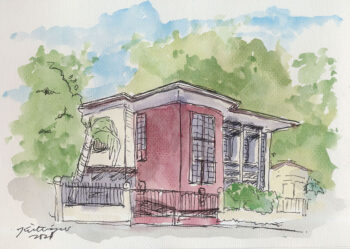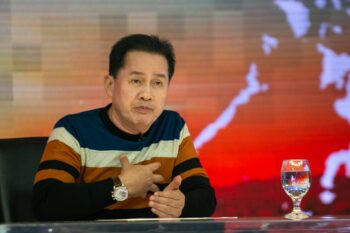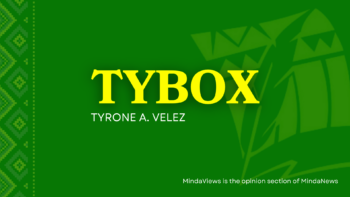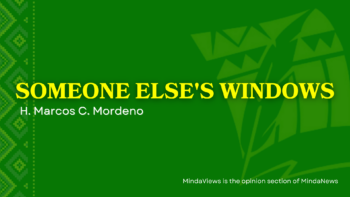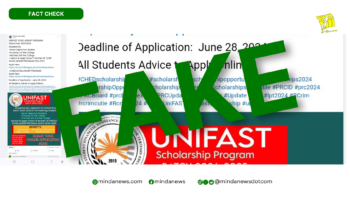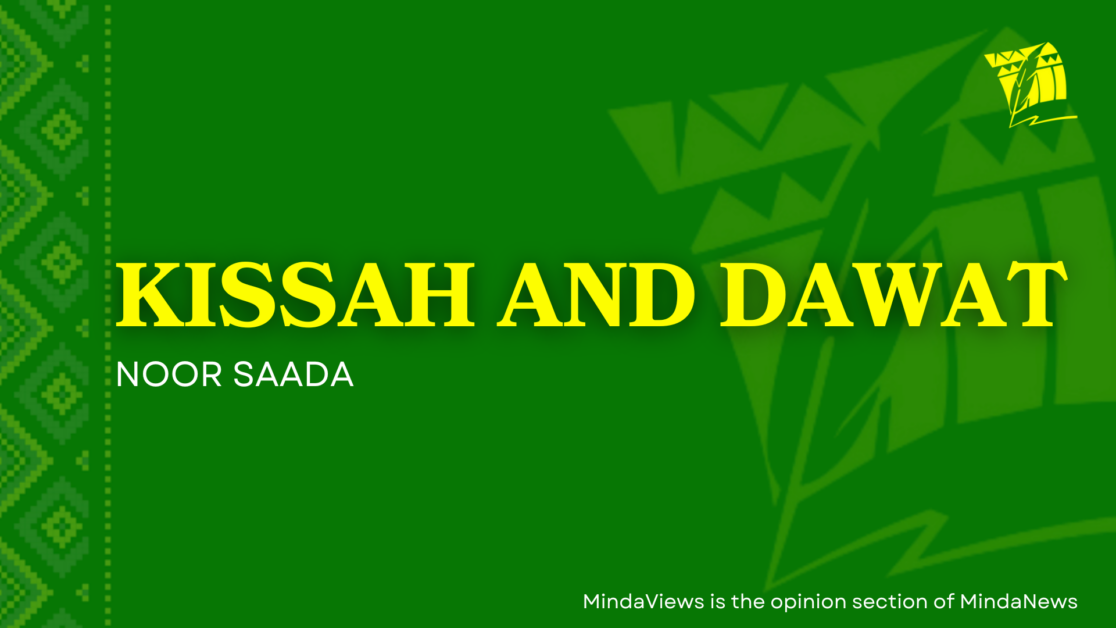
ZAMBOANGA CITY (MindaNews / 14 August) – The term ‘Ra’ayat’ pertains to the common people in various local languages. This concept resonates in languages such as Bahasa Indonesia and Melayu, where it is expressed as ‘rakyat.’ In Filipino, its closest equivalents are “sambayanan” or “katawhan” in Cebuano/Binisaya. It is frequently mentioned in various political circles, regardless of their affiliations, to justify calls for processes of societal formation, reformation, and transformation. This concept serves as one of the two unifying symbols in Moro politics, the other being the promotion of Islam as the foundation for these processes.
The Bangsamoro region’s ra’ayat is growing. Judging by the 2020 Census, there are now three out of five provinces in the region that have breached the one-million mark – Maguindanao, Lanao del Sur and Sulu. The region’s population is at 4,404,288. The region’s population is now higher by more than 600,000 compared with the 2015 Census. Between 2015 and 2020, the region’s population registered a 3.26-percent increase per annum and since then should have increased by more than 460,000 this year.
The region’s ra’ayat faces poverty with incidence at 29.9 percent or equivalent to 0.23 million individuals living on P11,957 per month, and among this percentage there are 0.07 million with per capita income less than the food threshold.
Among the ra’ayat, Republic Act 8425 or the Social Reform and Poverty Alleviation Act identified 12 basic sectors considered as “the disadvantaged sectors of Philippine society” and these are the (1) farmer-peasant, (2) artisanal fisherfolk, (3) workers in the formal sector and migrant workers, (4) workers in the informal sector, (5) indigenous peoples and cultural communities, (5) women, (6) differently-abled persons, (7) senior citizens, (8) victims of calamities and disasters, (9) youth and students, (10) children, and (12) urban poor.
In the PSA’s Subsistence Incidence, among these basic sectors based on its 2021 Family Income and Expenditure Survey (FIES), the ones with the highest subsistence incidence can all be found in Mindanao – Zamboanga Peninsula, Bangsamoro and Caraga. Bangsamoro region has the highest subsistence incidence among individuals living in urban sectors (14.5 percent), senior citizens (8.3 percent) and migrant and formal sector workers (7.5 percent).
About 68.2 percent of the children (individuals below 18 years old) or 1,293.4 thousand children in our region belong to poor families in 2018 with per capita income that is less than the per capita poverty threshold of PhP27,715 during this period. Poverty threshold is the minimum amount needed to meet an individual’s basic food and non-food needs. Both poverty and subsistence incidences are highest among the regions in the country.
In its latest report, BARMM PSA “recorded a significant drop in poverty incidence among families from 52.6 percent in 2018 to 29.9 percent in 2021, a huge decrease amid the BARMM’s transition and COVID-19 pandemic” and with ‘Lanao del Sur recorded a huge drop in poverty incidence among families from 64.2 percent in 2018 to 7.4 percent in 2021, joining the least poor cluster in 2021.”
Aside from children in poverty, early this year, Senator Gatchalian called for an inquiry based on his senate resolution 455 calling for a review of the region’s education system. He cited that while the National Enrolment Rate is at 97 percent, the region has only about 36 percent of individuals aged 12 to 15 enrolled in junior high, and 10 percent of individuals aged 16 to 17 enrolled in senior high. “He pointed to the latest Cohort Survival data for BARMM, where for every 100 children who enrolled in Grade 1 in School Year (SY) 2010-2011, only 17 were able to graduate Grade 12 in 2021-2022.” He also mentions about the learning quality in the region.
“In a democracy, the ra’ayat are supposedly the sovereign power. In fact, the very essence of democracy depends on an empowered citizenry. However, the ra’ayat, who are largely poor, illiterate, and marginalized, cannot fully participate and assert their popular sovereignty. Subsistence becomes a priority over sovereignty, backed by the expression “malayo sa bituka” (far from the stomach).”
When a significant portion of the ra’ayat is impoverished, lacking access to necessities and opportunities, their ability to fully participate in the democratic process and exercise their sovereignty is severely hampered. Poverty can limit the ra’ayat’s access to education, healthcare, and economic opportunities, leaving them marginalized and unable to engage meaningfully in shaping the policies that affect their lives.
Illiteracy compounds these issues, as an educated and informed ra’ayat is essential for a functioning democracy. It can hinder their ability to understand complex issues, critically assess information, and make informed decisions, thereby undermining their sovereignty by limiting their capacity to engage effectively in the political process.
All these ills perpetuate a cycle of dependency, disenfranchisement, and disempowerment, preventing the ra’ayat from actively engaging in the democratic process. In such situations, the promise of popular sovereignty remains unfulfilled, as the voices and needs of the ra’ayat, especially the marginalized, are ignored, and the government fails to adequately represent and serve their interests.
Thus, for the power elites, there are raisons d’etre to perpetuate the impoverishment, illiteracy, and marginalization of the ra’ayat, including a system of patrimonialism, bossism and clientelism. A largely dysfunctional public service can foster dependency and patronage, ultimately serving their interests.
The concept of “ra’ayat” as sovereign revolves around the idea that political authority resides collectively with them. In democratic societies, the principle of popular sovereignty emphasizes that the government’s legitimacy and power stem from the consent of the governed. This means that the ra’ayat, as citizens, collectively hold the power to elect representatives, participate in decision-making, and shape the laws and policies that govern their lives. This concept reflects the idea that governments exist to serve the interests of the people and those elected and appointed to public offices and government service should be accountable to them.
Towards this idealism, how can we then conscientize, mobilize and empower the non-poor and the poor ra’ayat? Understanding what the non-poor and poor ra’ayat can do can begin the process of their empowerment and engagement. Both groups require education and awareness about democratic principles, their rights, and the importance of civic engagement. Perhaps using social media to promote awareness and using inclusive language can educate and mobilize more sectors and a wider reach.
The civil society has an integral role in both educating and organizing the ra’ayat, too. Issue-based mobilization and action focusing on core issues of poverty reduction, addressing illiteracy and marginalization can be platforms for coming together, sharing concerns, and collectively advocating for change. The civil society sector can also identify and support emerging leaders from within the community who can represent the interests of the ra’ayat effectively and inspire others to get involved.
The Barangay and Sangguniang Kabataan elections are just around the corner, providing a valuable opportunity to educate the ra’ayat about the functions of these offices and the qualifications required. This knowledge empowers voters to make informed decisions that will yield long-term impacts and benefits.
Cultural and social dynamics are also in play. The ra’ayat (citizens) need clarification on why there is a need to break away from traditions and norms that perpetuate their dependency. These traditions and norms should instead support the positive cultural and social development of the ra’ayat.
Collaborating with partners, including civil society organizations, NGOs, and enlightened local leaders, can amplify efforts and resources, while also bringing additional expertise and a wider reach.
Through the utilization of these and various other creative and active non-violent strategies, we can foster a sense of ownership, responsibility, and empowerment among both the non-poor and the economically disadvantaged ra’ayat. This will enable them to participate more effectively in the democratic process and assert their popular sovereignty. Jean-Jacques Rousseau, an 18th-century philosopher who is said to have inspired the leaders of the French Revolution and the Romantic generation, left us with an enduring quote about true political sovereignty: that it invariably remains in the hands of the people when the rule of law is upheld by a democratically-endorsed government. Herein lies the authentic essence of the ra’ayat.
(MindaViews is the opinion section of MindaNews. Noor Saada is a Tausug of mixed ancestry—born in Jolo, Sulu, grew up in Tawi-Tawi, studied in Zamboanga and worked in Davao, Makati and Cotabato. He is a development worker and peace advocate, former Assistant Regional Secretary of the Department of Education in the Autonomous Region in Muslim Mindanao, currently working as an independent consultant and is a member of an insider-mediation group that aims to promote intra-Moro dialogue.)


